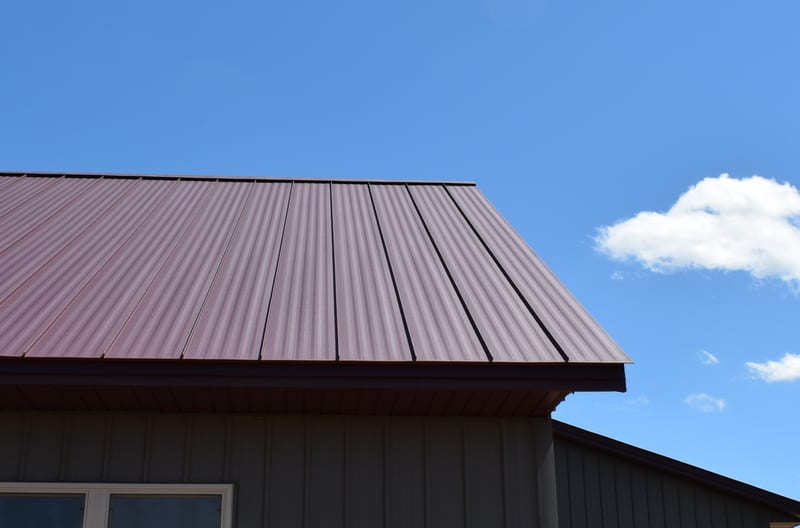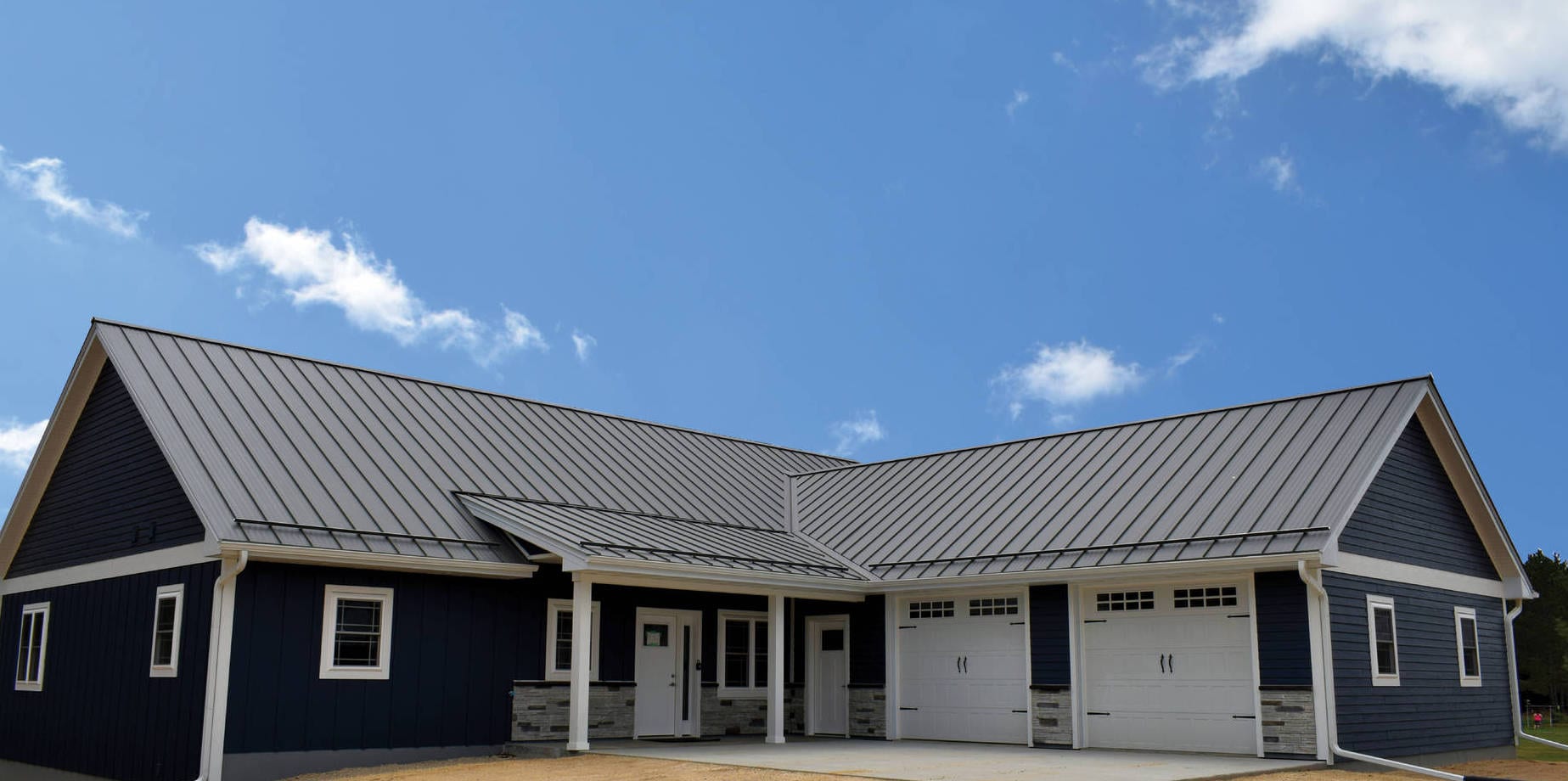When you’re thinking about installing a metal roof on your property, there are a number of factors to consider. Installation and material costs, maintenance costs, curb appeal appearance, weather conditions, plus attic ventilation are some of those that are at the top of the list.
Two Types of Metal Roofing Panels
Metal roofing panels come in two different concepts – exposed fastener or hidden fastener. The exposed fastener panels are installed with screws that are visible, and clearly exposed to the elements of nature. A perfect example of this is the standard “pole barn.”
Meanwhile, hidden fastener panels, more commonly called standing seam, is designed to use either a clip or nail flange system, which is hidden from the elements of the weather. Not only does the standing seam system have a design to fight moisture intrusion for a longer lifetime, but it also has more style than exposed fastener.
Exposed Fastener Metal Roofing Panels
Exposed fastener panels that are properly installed with no needed maintenance, could last 20 years. With occasional maintenance, the life could possibly be extended to 30 years. Unfortunately, because screw down metal roof systems screw the metal down to the decking directly, using approximately 70 screws per square (10’ x 10’ section of roofing), the roof isn’t able to expand and contract naturally.
The screws that are used have a rubber washer under the screw head, designed to seal around the hole made in the steel panel which secures it to the decking underneath. Unfortunately, eventually these washers wear out and need to be replaced to keep the screw holes dry. Plus, if they are not installed directly perpendicular to the panel, there is possibility for leaks to occur before the washer is even worn out.
In most cases, if the panels are still in great condition, it’s best to have the roof “re-screwed” – removing the screws, and installing new ones with new rubber washers. The cost of doing this is much less than fixing a water damaged roof deck or attic. The metal panel may last up to 50 years, but the screw’s washer is likely to only last 9-15 years.
Hidden Fastener Metal Roofing Panels
Standing seam, on the other hand, has either a clip or nail flange system –thus, the hidden fastener. These attachment systems are hidden underneath the panel seam overlaps, as they are installed. An important point to note is that metal roofing likes to expand and contract during heating and cooling cycles. The clip or flange system allows for panel shifting or movement. As long as the standing seam roof is properly installed, and your attic is adequately ventilated, there’s no reason you shouldn’t get at least 30-50 years out of a new standing seam metal roof. Under ideal conditions, your new standing seam metal roof could live to the higher end – nearly 50 years.
No roofing system is perfect though, and all will eventually need some maintenance or repairs. The most common places that any roof may leak, regardless whether it’s metal or asphalt shingles, are around skylights, chimneys, pitch breaks, and valleys. With a metal roof, you may have to rely on caulking and metal roof sealants to stay entirely leak free. So it’s important to inspect those areas annually, or even twice a year.
Roofing Panel Suggestions
It’s common to see exposed fastener panels used as roofing for pole barns (post-frame), sheds or garages. When it comes to commercial or residential roofing, standing seam (hidden fastener) is a much smarter option, not only due to longevity, but the fact that the fasteners are hidden from the weather elements, providing better curb appeal and functionality.
Contact the All American Steel Team today to get your project’s materials quoted at AllAmericanSteel.net, or visit your closest All American Do it Center to see an in-store display of panel colors.



